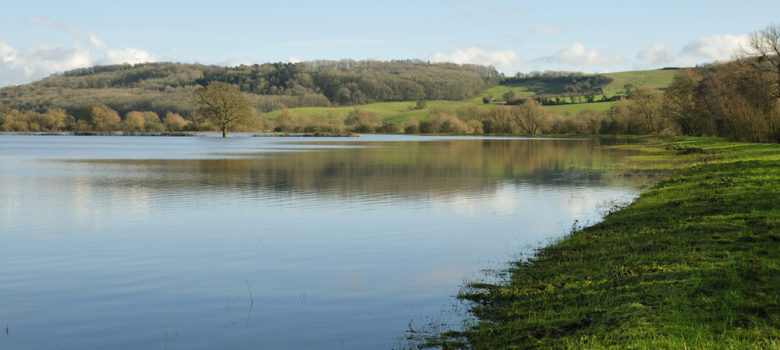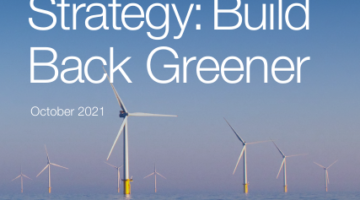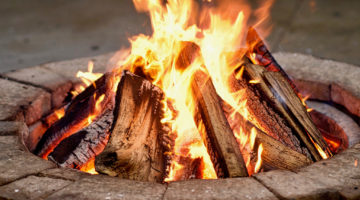
In this new age of renewables and increasing emphasis on green energy, it seems completely mad to a lot of people that one of the UK’s most powerful resources is going untapped. As an island nation, surely we should be at the forefront of tidal energy projects, so what’s going on?
Why do we need tidal power?
Quite apart from obviously being a clean way to generate energy, one of the biggest benefits of tidal energy production is that it is, for the most part, predictable. Accounting for sea levels and other external factors, we can theoretically predict the tides hundred if not thousands of years into the future. Since there are potential variables, it can’t be considered an exact science, but it’s a whole lot more predictable than more traditional renewables like wind and solar. Those techs have problems with intermittency, which is more of an issue than most people seem to think. You can read more about it here.
This is important because an energy grid needs a certain level of predictability to successfully operate. Currently, we achieve it primarily with baseload technologies like coal and nuclear plants, which operate fairly consistently 24/7. However, if we had a tidal element to our energy generation, we could reduce our reliance on these fossil fuels.
What makes the River Severn special?
It might surprise you to learn, but the Severn actually has one of the strongest tides on the planet.
The Severn Bore has the 2nd highest tidal range in the world, reaching as much as 50ft. It’s all to do with the shape of the river, which funnels water into a narrower and narrower channel, going from 5 miles wide at Avonmouth to less than 100 yards in Gloucester. At the same time as the river narrows, the depth also features a naturally steep change, creating a kind of funnel. During Spring Tides, the average flow in some places if more than double the discharge of the Amazon River.
It’s the power and consistency of the tidal patterns that make it such a desirable option. Back in 2007 is was estimated that 5% of the UK’s energy use could be generated by a power plant in the Severn – that was probably a bit of an overestimation, but it’s still a serious amount of clean energy that we’re not harnessing.
What are the problems with using the River Severn for energy?
Cost
The biggest issue for the government seems to be the cost of the proposed projects for the Severn. The largest proposal comes with a price tag of £34.3bn (for comparison, the controversial new nuclear project at Hinkley Point C is not estimated at £22.5bn). When the government rejected their shortlist of Severn barrage/lagoon plans in 2010, it was mostly based on cost. They did leave the door open to private investors, but even for the biggest investors, £35bn is not pocket change.
Ecology
Fish fish fish. When we start building barrages and tidal lagoons, then we start introducing turbines. We’ve talked a little about the power of the Severn, and what that essentially means is large, fast-moving turbines – the kind that threatens Nemo in the Pixar movie only much, much, much bigger and scarier. It’s not just the spinning blades either, it’s the changes in pressure. In 2010 the government rejected plans for a barrage or lagoon, partly on the basis that migratory fish in the Severn, Wye and Usk would become extinct within 5 years as a result. This obviously has a knock-on effect with other animals too; ecologists have warned that any of the current proposals could affect up to 30 species of local birds.
Uncertainty
Perhaps the biggest barrier to achieving support for a project on the Severn is that it makes people nervous. Few tidal projects on this scale have ever been attempted, and it seems that no one wants to be the guinea pig to work out any teething problems.
It’s also a technology that isn’t as well known and doesn’t have the public awareness or long successful history or wind and solar. For politicians, it’s easier to win votes in this country by supporting a new wind farm than by trying to explain how tidal power works. The lack of familiarity is a problem.
Will a lagoon or barrage ever happen on the River Severn?
It’s impossible to say. Engineer Rod Rainey has designed a solution that he thinks would solve the problem of the fish and generate an average of 4GW and is essentially an old-style water-wheel. It’s a lot cheaper than previous suggestions but would still require some smoothing since the generation levels would be so variable. Pumped hydro storage is the obvious solution, but would need to be capable of storing a huge 30GWh for the daily peaks.
In truth, there are some serious barriers we need to overcome in order to turn any kind of energy generation system from the Severn into something feasible. Thankfully, we’re at a turning point in our culture where we’re shifting more towards ideas like that; there has never been a better time to tackle these difficulties and make a River Severn power plant into a reality.
Think we missed something? Do you have a different opinion?
Comment below to get your voice heard…












Silt!
The main thing anyone who has observed the River Severn at low tide will notice is the huge amounts of thick chocolate brown sludge all the way down the tidal range from Gloucester to Avonmouth and beyond. The only thing that keeps the river channel open is as you mention; the very powerful flows both up and down twice almost every day. The river has a potential bore wave on over 200 days per year, but only those bores on the highest dozen or so tides per year are worth watching as I have done so on many occasions. It is the aftermath of the highest tides that you see the water can leave behind huge amounts of the silt load it is carrying, in the slower flowing areas, half a centimetre per tide.
That would amount to around 3.5m per year, Thus if flows were slowed by a barrage or anything significantly impeding flow, that it is likely within 10yrs the river would be reduced to marshland with a channel no bigger than at Gloucester, so no tidal reservoir of water power to generate electricity. Unless you want to cost in massive dredging operations to remove many thousands of tons of silt every year!
Indeed, it was thought Canada’s huge Hudson Bay with similar massive tidal range could be sealed with a tidal power barrage, but the same doubts were raised and a small scale pilot scheme showed that this risk was indeed very real. So no go there either!
Yes the theory looks fine on the situation today, but the practical risks of mans intervention are not presently easily mitigated or eliminated.
You don’t mention that you can add renewable energy such as wind power to the reservoir created by the tidal barrage. This was originally proposed I think in a 1974 version of the Severn barrage project. Since nuclear power stations cannot be turned on and off it was envisaged that this surplus energy could be stored in the reservoir thus adding to the available tidal energy.
Mike H. Good points, which I suspect the engineering consultancies concerned in the 2010 proposal must have been faced with also.
what is missing from the Green age article is a link or website address for the technical proposal, so that we can see how the engineers proposed to avoid the problem, or indeed if they missed it.
The Rod Rainey idea sounds interesting and maybe ecologically sound and effectively accepts that not all the available energy can be harvested but only a portion. Again the link is to Rod’s profile rather than to an article or paper or description or patent of how his idea could work. There is obviously some technically interesting stuff out there and we just need a few more links to get involved in the ideas discussion and maybe even help using our own experience
No hydro on the Severn? So there are currently 8 active schemes on the Thames (which is arguably less economic as a power source). Why the delay?
Nuclear is not a fossil fuel.